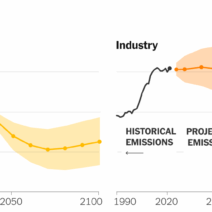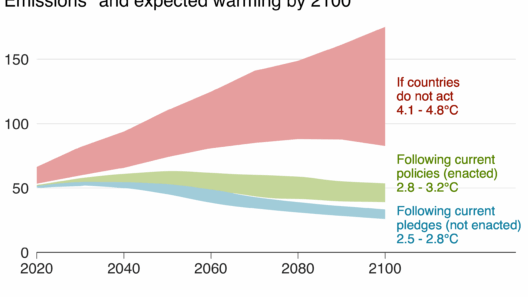Climate change is an unequivocal reality, influenced by an array of greenhouse gases, each contributing uniquely to the phenomenon of global warming. Among these gases, carbon dioxide (CO2) is often spotlighted; however, carbon monoxide (CO) deserves attention in the discourse surrounding climate science. While carbon monoxide is not a greenhouse gas in the conventional sense, its relationship with other atmospheric constituents and its indirect effects on global warming demand examination.
To understand the role of carbon monoxide, it is essential to delineate the characteristics of greenhouse gases and their contributions to the Earth’s climate. Greenhouse gases are compounds that absorb and emit thermal radiation. This process of trapping heat in the atmosphere creates a “greenhouse effect,” an essential mechanism that regulates the planet’s temperature. The most prevalent greenhouse gases include carbon dioxide, methane (CH4), nitrous oxide (N2O), and water vapor. While CO2 is the most substantial culprit in terms of anthropogenic climate change, the intricacies of atmospheric chemistry reveal an intricate interplay among various gases.
Carbon monoxide, primarily produced through incomplete combustion of fossil fuels, biomass burning, and vehicular emissions, operates differently. Although carbon monoxide itself does not exert a direct warming effect, its role as a precursor to other pollutants and greenhouse gases merits consideration. In particular, carbon monoxide can influence the atmospheric lifespans of certain compounds, thereby contributing indirectly to climate change.
The transformation of carbon monoxide in the atmosphere gives rise to fascinating yet complex interactions. When carbon monoxide is released, it can undergo oxidation to form carbon dioxide. This process not only contributes to the overall pool of CO2 but also impacts the concentrations of hydroxyl radicals (•OH). Hydroxyl radicals play a critical role in atmospheric chemistry by acting as agents that remove various pollutants, including methane, a potent greenhouse gas. Consequently, when carbon monoxide levels are elevated, the availability of hydroxyl radicals diminishes, leading to a potential increase in methane concentrations and, subsequently, a heightened greenhouse effect.
This intricate relationship underscores the ubiquitous interconnections among atmospheric constituents. It is a testament to the complexity of climate systems, where one pollutant can influence the behavior and effectiveness of others. Understanding this web of interactions engenders a more nuanced perspective on climate change and underscores the necessity of addressing all sources of emissions, not solely the most conspicuous offenders.
Furthermore, carbon monoxide’s impact extends beyond its direct and indirect contributions to greenhouse gas concentrations. It is also vital to examine its role in air quality and public health. High levels of carbon monoxide are linked to respiratory issues, decreased lung function, and cardiovascular diseases. The prevailing emission sources, such as traffic, industrial activities, and biomass burning, pose immediate threats to human health, while simultaneously contributing to longer-term environmental challenges. The dual threat to both public health and climate stability exemplifies the urgent need for comprehensive strategies to mitigate emissions from various sectors.
Moreover, the significance of carbon monoxide extends to its effects on atmospheric dynamics and local weather patterns. The gas can influence the formation of tropospheric ozone, a secondary pollutant formed through complex reactions involving sunlight, nitrogen oxides (NOx), and volatile organic compounds (VOCs). Elevated levels of ozone can exacerbate the greenhouse effect, further compounding the challenges posed by climate change.
Addressing carbon monoxide emissions can enhance air quality, improve public health outcomes, and mitigate the cascading effects on climate. This multifaceted immediacy prompts a call to action for policymakers and stakeholders to implement robust measures aimed at reducing emissions from transportation, industrial processes, and agricultural practices. Transitioning to cleaner technologies, adopting stricter regulations, and fostering sustainable practices can catalyze significant changes in both atmospheric composition and human health.
As we delve further into climate science, it becomes increasingly evident that carbon monoxide, despite its indirect role in global warming, possesses profound implications. It serves as a reminder that the atmosphere is a dynamic, interconnected system, where human activities reverberate beyond immediate effects, influencing the broader climate and ecological frameworks. In our pursuit of climate solutions, it is essential to remain vigilant and attentive to all pollutants, recognizing their intertwined fates within the global ecosystem.
In summation, while carbon monoxide may not be classified as a primary greenhouse gas, its far-reaching effects merit significant consideration in discussions surrounding climate change. The intricate connections between carbon monoxide and other atmospheric components underscore the complexities of climate systems. Emphasis must be placed on comprehensive emissions reduction strategies that target all pollutants, while keeping public health implications at the forefront of our environmental initiatives. As awareness grows regarding the delicate balance of atmospheric chemistry, a holistic approach becomes increasingly vital for addressing the pressing challenges of climate change.






